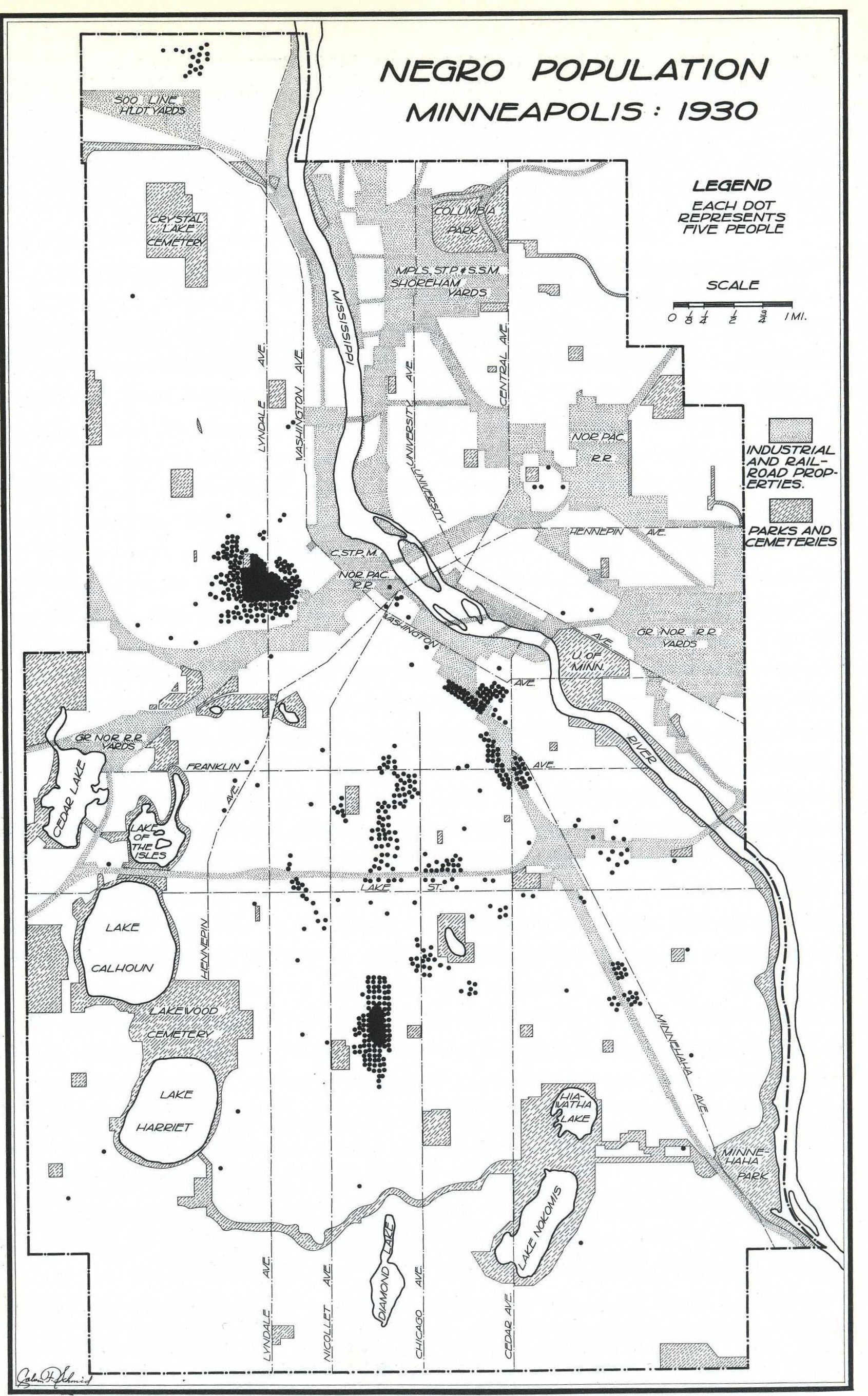
It’s map Monday. Here we have another map from Calvin Schmid’s Social Saga of Two Cities, the demographic opus he published in 1937 with the support of the Minneapolis Council of Social Agencies. This chart shows the concentration of “Negro Population” in Minneapolis, circa 1930.
Over the last several weeks, I have traced the origins of residential segregation in Minneapolis, looking at newspaper accounts of racial conflict around property transactions in the first decades of the twentieth century. Between 1910 and 1920, the African-American population in Minneapolis grew from 2,592 to 3,927. In these years, new migrants settled largely in two neighborhoods: the near Northside and Seven Corners. These concentrations of black residents did not emerge by coincidence.
In previous posts I have written about what 1909 newspaper reports called “race wars” in Linden Hills and Prospect Park. These episodes show how segregation was created in large part by neighborhood activism, which served to keep African Americans from purchasing or renting homes in all white areas. Racial discrimination was not codified into law in Minneapolis. But it was omnipresent, shaping property exchanges in all parts of the city. The result was the clusters on this map.
In 1910, the African American community in Minneapolis was not a homogenous group. Internal class divisions complicated and even racial solidarity. Black leaders often stood ready to defend the rights of men like Pullman Porter William H. Simpson, who built a home in Prospect Park. But when William S. Malone– who was attempting to start a mission in the city’s seedy Gateway district–sought to purchase a home in Linden Hills, he was attacked by both whites and middle class blacks.
An interesting character, Malone continues to appear in the black press for years after the Canfield House incident. Charles Sumner Smith, editor of the Twin City Star and The Minnesota Messenger, rails against Malone in September, 1910, calling him a “political parasite” and leader of “renegades, bar-flies, and blind-piggers, who are bartering their votes for beer, cigars and money.” I’ve been trying to investigate more about Malone and his specific political affiliations, but his activity has been difficult to track. He appears again in the Star in 1912 under the headline: “Malone stripped of authority. Committee tears his official badge.” He had been in charge of managing delegates to a local Methodist conference, but having been found “in a state of intoxication,” was barred from attention the convention. I’m working to see if I can figure out why Malone was so despised by both white and African American Minneapolitans.
This post was written by Historyapolis intern Derek Waller, who researched the origins of residential segregation in Minneapolis for his January term project at St. Olaf College. Waller is continuing his research into this and other incidents, which he will present as part of a senior capstone paper.